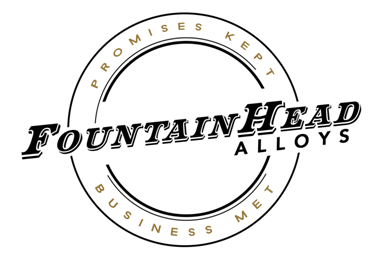Invar 36 | Nilo 36 | Alloy 36 (ASTM F1684) | MIL-I-23011 CL 7 | UNS K93600 | K93601
General Information
Carpenter Invar “36”® alloy is a 36% nickel-iron alloy possessing a rate of thermal expansion approximately one-tenth that of carbon steel at temperatures up to 400°F (204°C).
Alloy 36 (NILO 36, INVAR 36) is a Nickel-Iron, low expansion alloy which contains 36% Nickel. Invar 36 has a low coefficient of expansion from cryogenic temperatures to about +500°F (260°C). Invar 36 also retains good strength and toughness at cryogenic temperatures. Common applications include tooling for aerospace composites, standards of length, measuring devices, thermostat rods, laser components and tanks and piping for the storage and transportation of liquefied gases.
Chemical Composition Limits
| Weight % | Ni | Fe | C | Mn | P | S | Si | Cr | Mo | Co |
| Invar 36 | 35-38 | Rem | 0.10 max | 0.06 max | 0.025 max | 0.025 max | 0.35 max | 0.50 max | 0.50 max | 1.0 max |
Physical Properties
Specific Gravity — 8.05
Density — 0.2910 lb/in³
Mean Specific Heat — 0.1230 Btu/lb/°F
Thermal Conductivity — 72.85 BTU-in/hr/ft²/°F
Curie Temperature — 535 °F
Melting Range — 2600 °F
Mean CTE
200°F 0.720 x 10-6 in/in/°F
300°F 1.17 x 10-6 in/in/°F
500°F 2.32 x 10-6 in/in/°F
700°F 4.22 x 10-6 in/in/°F
Modulus of Elasticity (E)
Annealed Bar and Strip 20.5 x 103 ksi
Cold Rolled 21.5 x 103 ksi
Electrical Resistivity 70°F 495.0 ohm-cir-mil/ft
Temperature Coeff of Electrical Resist 70 to 212°F 6.11 x 10-4 Ohm/Ohm/°F
Applications
This alloy has been used for applications where dimensional changes due to temperature variation must be minimized such as in radio and electronic devices, aircraft controls, optical and laser systems, etc.
Carpenter Invar “36” alloy has also been used in conjunction with high expansion alloys in applications where a motion is desired when the temperature changes, such as in bimetallic thermostats and in rod and tube assemblies for temperature regulators.
Corrosion Resistance
Important Note:The following 4-level rating scale is intended for comparative purposes only. Corrosion testing is recommended; factors which affect corrosion resistance include temperature, concentration, pH, impurities, aeration, velocity, crevices, deposits, metallurgical condition, stress, surface finish and dissimilar metal contact.
Availability
Alloy 36 (NILO 36, INVAR 36) is available in Bar, Round Bar, Tube, Rod, Strip, Plate, Sheet, Wire, Welding Wire TIG and MIG, Tooling Plate. For all stock availability contact sales.
Invar 36 Tube is available the following size ranges.
Outside Diameter – 0.25mm (0.010″) up to 16.00mm (0.625″)
Wall – 0.05mm (0.002″) up to 1.00mm (0.040″)
Straight Lengths – 1.00mm (0.040″) up to 5000.00mm (197″)
Coils Lengths – 5 Metres to 15 Metres
Standard Tolerance- OD &ID +/-0.03mm (0.0012″)
Wall +/- 10%
Tight Tolerance – OD&ID +/- 0.015mm (0.0006″)
Wall +/-3%
Some thin wall tubes up to 25.40 mm (1.000″) can be supplied.
We are experts in difficult to obtain sizes contact sales for many other sizes and forms
Heat Treatment
Heat Treatment for Optimal Dimensional StabilityThe presence of cold work stresses causes very slight changes in dimensional stability with respect to time and temperature. This change can be detected only with exceedingly sensitive devices.
To assure optimal dimensional stability, heat to 1500°F (815°C), hold at heat for 30 minutes per inch of thickness, water quench, reheat to 600°F (315°C) holding one hour at heat, then air cool.
To promote temporal stability (when necessary), Carpenter Invar “36” alloy has been aged for 24 to 48 hours at 200°F (93°C).
Annealing
Heat to 1450°F (790°C) and hold at heat 30 minutes per inch of thickness, then air cool. Heating to temperatures above 1000°F (538°C) relieves the presence of cold work stresses. The higher the temperature, the lower the annealed hardness.
Workability
- Forging
The principal precaution to observe in forging is to heat quickly and avoid soaking in the furnace. Long soaking may result in a checked surface due to absorption of sulfur from the furnace atmosphere and/or oxide penetration. A forging temperature of 2000/2150°F (1100/1180°C) is preferred. - Blanking and Forming
Carpenter Invar “36” alloy presents no unusual problems in blanking and forming. For cleanest blanking properties, a Rockwell hardness of B 90 is suggested. This hardness will allow mild bending and forming operations. Where deep drawing operations are involved a finish annealed strip of a Rockwell hardness of about B 75 is usually desirable. - Grinding and Polishing
A silicon carbide wheel is desirable, preferably a soft wheel which will wear without loading. For finish grinding, a satisfactory grade to start with is No. 80 grit. - Weldability
Carpenter Invar “36” can be welded by the conventional methods. Caution must be taken so as not to overheat the molten metal. This will avoid spattering of the molten metal and pits in the welded area. When filler rod is required, Invarod has been used. - Brazing
Silver and zinc-free alloys have been used for brazing Carpenter Invar “36” alloy. This alloy should be annealed prior to brazing. Joints should be designed to avoid placing Carpenter Invar “36” alloy in tension during brazing. - Plating
Carpenter Invar “36” alloy can be chromium, cadmium and nickel plated or zinc coated by the usual methods used for ferrous alloys.
Specifications
UNS K93600, K93601
Werkstoff Nr. 1.3912
ASTM B 388, ASTM B 753, DIN 1715 (Sheet and Strip)
ASTM F-1684
MIL-S-16598 and MIL-I-23011 CL 7
Trademarks – NILO 36 and INVAR 36
FeNi36
Disclaimer :- The information and data presented herein are typical or average values and are not a guarantee of maximum or minimum values. Applications specifically suggested for material described herein are made solely for the purpose of illustration to enable the reader to make his/her own evaluation and are not intended as warranties, either express or implied, of fitness for these or other purposes. There is no representation that the recipient of this literature will receive updated editions as they become available.
FountainHead Alloys is ISO 9001:2015 approved. © FountainHead Alloys 1996

